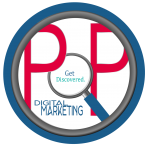
Taking small steps now will create serious momentum later.
At Pop Digital, we know the spring-to-summer transition can be chaotic. Between shifting priorities, seasonal campaigns, and that creeping vacation mindset, it’s easy for marketing to fall into reactive mode. But here’s the good news: a few intentional moves now can set your summer strategy up for success—without the scramble.
Whether you’re a solo founder or part of a growing team, these five actions will help you stay ahead of the game:
1️. Audit Your Email List
A cluttered list = a diluted message. Take 20 minutes to clean up your email list:
- Remove bounced addresses and inactive subscribers
- Segment your audience for smarter targeting
- Revisit your welcome series and automations
This quick cleanup can boost your open rates, increase deliverability, and help your content reach the right people.
2️. Repurpose Top-Performing Content into Reels
Your best ideas don’t need to live once. Revisit your top posts from the past quarter and give them new life as Instagram Reels, TikToks, or short-form video ads.
- Turn a blog intro into a video script
- Animate a carousel into a voiceover clip
- Share a testimonial as a 15-second punch
Video still leads the pack in engagement—make it work for you with content you’ve already proven.
3️. Run a Test Campaign
Not sure what’s clicking? Test it. Launch a low-lift test campaign with:
- New messaging or offers
- A fresh audience segment
- Alternate visuals or ad formats
You’ll gain insights fast, refine your creative, and avoid wasting time (and budget) on the wrong strategy come summer.
4️. Update Your Website Keywords
Search behavior shifts with the season. Make sure your site content reflects what your audience is actually searching for. Look for opportunities to:
- Refresh headlines and meta descriptions
- Add seasonal blog content
- Optimize your top service pages
- Resubmit your site for indexing on search consoles
A well-optimized site boosts visibility when your audience is most active—and ready to convert.
5️. Batch + Schedule Your Content
No one wants to be scrambling for social posts in mid-July. Block off a few hours now to:
- Pre-plan your content calendar
- Batch captions and visuals
- Schedule your posts across platforms
Summer should be for creativity—not chaos.
You don’t need a complete rebrand or massive campaign to make your marketing work smarter. A few focused tweaks can create space, clarity, and serious momentum.
At Pop Digital Marketing, we help businesses do exactly that—with collaborative strategy sessions, real-time campaign support, and targeted consulting designed to move the needle.
Whether you need help refreshing your website SEO, creating a smarter email flow, or mapping out your summer content calendar—we’re here to roll up our sleeves and build it with you.
Ready to make your next move?
Let’s talk strategy – email: info@popdigitalmarketing.com



 Here are 5 Free Tools to monitor your competition:
Here are 5 Free Tools to monitor your competition:




Recent Comments